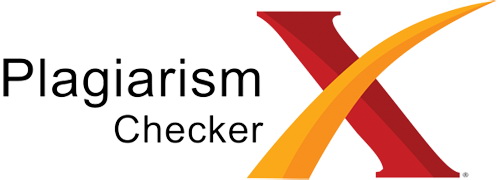Efek Ozonasi Minyak Zaitun Terhadap Angka Peroksida Menggunakan Reaktor Double Dielectric Discharge (DDBD)
Abstract
Abstrak: Penelitian ini bertujuan untuk menganalisis perubahan angka peroksida minyak zaitun yang telah diberikan gas ozon dengan variasi dosis ozon terlarut. Sumber gas ozon berasal dari reaktor double dielectric barrier discharge (DDBD) yang menggunakan variasi aliran gas oksigen sebesar 0,1 L/menit, 0,3 L/menit, dan 0,6 L/menit dengan frekuensi resonansi 50 Hz dan duty cycle 30%. Hasil eksperimen menunjukkan dosis ozon terlarut untuk aliran gas oksigen 0,1 L/menit, 0,3 L/menit, dan 0,6 L/menit adalah 1007,04 mgO3/mL minyak, 2097,60 mgO3/mL minyak dan 2711,04 mgO3/mL minyak. Bertambahnya dosis ozon mengakibatkan angka peroksida menjadi lebih besar dengan nilai tertinggi pada hari ke 7 dan hari ke 60 sebesar 300,16 mEq/kg dan 290,42 mEq/kg. Angka peroksida yang tinggi dapat mempercepat penyembuhan luka sehingga hasil ozonasi minyak zaitun menjadi potensi dalam dunia medis.
Abstract: This study aims to analyze changes in the peroxide value of olive oil that has been given ozone gas with variations in the dissolved ozone dose. The source of ozone gas comes from a double dielectric barrier discharge (DDBD) reactor that uses variations in oxygen gas flow of 0.1 L/min, 0.3 L/min, and 0.6 L/min with a resonant frequency of 50 Hz and a duty cycle of 30%. The experimental results show that the dissolved ozone doses for oxygen gas flow 0.1 L/min, 0.3 L/min, and 0.6 L/min are 1007.04 mgO3/mL oil, 2097.60 mgO3/mL oil and 2711, 04 mgO3/mL, respectively. The increasing dose of ozone resulted in a higher peroxide value with the highest values on day 7 and day 60 of 300.16 mEq/kg and 290.42 mEq/kg, respectively. The high peroxide value can accelerate wound healing so that the ozonation of olive oil has potential in the medical world.
References
Aminah, S. (2010). Bilangan Peroksida Minyak Goreng Curah dan Sifat Organoleptik Tempe pada Pengulangan Penggorengan. Jurnal Pangan Dan Gizi, 1(1), 7–14. https://doi.org/10.26714/jpg.1.1.2010.
Bocci, V. (2006). Is it true that ozone is always toxic? The end of a dogma. Toxicology and Applied Pharmacology, 216, 493–504. https://doi.org/10.1016/j.taap.2006.06.009
Fitri, A. S., & Fitriana, Y. A. N. (2020). Analisis Angka Asam pada Minyak Goreng dan Minyak Zaitun. Sainteks, 16(2), 115–119. https://doi.org/10.30595/st.v16i2.7128
Forte, M., Jolibois, J., Pons, J., Moreau, E., Touchard, G., & Cazalens, M. (2007). Optimization of a dielectric barrier discharge actuator by stationary and non-stationary measurements of the induced flow velocity: Application to airflow control. Experiments in Fluids, 43(6), 917–928. https://doi.org/10.1007/s00348-007-0362-7
Garamoon, a. a., Elakshar, F. F., & Elsawah, M. (2009). Optimizations of ozone generator at low resonance frequency. The European Physical Journal Applied Physics, 48(2), 21002. https://doi.org/10.1051/epjap/2009144
Gouri, R., Zouzou, N., Tilmatine, A., Moreau, E., & Dascalescu, L. (2011). Collection efficiency of submicrometre particles using single and double DBD in a wire-to-square tube ESP. IOP Punblishing Journal of Physics: Applied Physics, 44, 1–8.
Jodpimai, S., Boonduang, S., & Limsuwan, P. (2015). Dielectric barrier discharge ozone generator using aluminum granules electrodes. Journal of Electrostatics, 74, 108–114. https://doi.org/10.1016/j.elstat.2014.12.003
Lee, B. H., Song, W. C., Manna, B., & Ha, J. K. (2008). Dissolved ozone flotation (DOF) - a promising technology in municipal wastewater treatment. Desalination, 225(1–3), 260–273. https://doi.org/10.1016/j.desal.2007.07.011
Miyake, M., Nakajima, H., Hemmi, A., Yahiro, M., Adachi, C., Soh, N., Ishimatsu, R., Nakano, K., Uchiyama, K., & Imato, T. (2012). Performance of an organic photodiode as an optical detector and its application to fluorometric flow-immunoassay for IgA. Talanta, 96, 132–139. https://doi.org/10.1016/j.talanta.2012.02.006
Mustikyantoro, A. P. J. (2020). Potensi Manfaat Kardioprotektif dari Minyak Zaitun. Jurnal Ilmiah Kesehatan Sandi Husada, 12(2), 908–915. https://doi.org/10.35816/jiskh.v12i2.431
Nur, M., Susan, A. I., Muhlisin, Z., Arianto, F., & Wibowo, A. (2017). Evaluation of Novel Integrated Dielectric Barrier Discharge Plasma as Evaluation of Novel Integrated Dielectric Barrier Discharge Plasma as Ozone Generator. Bulletin of Chemical Reaction Engineering & Catalysis, 12(1), 24–31.
Puryadi, Nur, M., Sumariyah, Wijaya, M. R., & Niyomukiza, J. B. (2019). Reactor Study of Double Dielectric Barrier Discharge ( DDBD ) Plasma for I nternational J ournal of A llied M edical S ciences and C linical R esearch ( IJAMSCR ) Reactor Study of Double Dielectric Barrier Discharge ( DDBD ) Plasma for. International Journal of Allied Medical Sciences and Clinical Research (IJAMSCR), 7(January), 127–131. https://doi.org/10.13140/RG.2.2.25653.12002
Roshan, A., Ream, N., Yaser, A. M., & Amir, A. S. (2018a). Evaluation of Wound Healing Activity of Ozonated Linseed and Sunflower Oils. International Journal of Pharmacognosy and Phytochemical Research, 10(5), 182–187.
Roshan, A., Ream, N., Yaser, A. M., & Amir, A. S. (2018b). Evaluation of Wound Healing Activity of Ozonated Linseed and Sunflower Oils Evaluation of Wound Healing Activity of Ozonated Linseed and Sunflower Oils. International Journal of Pharmacognosy and Phytochemical Research, 10(5), 182–187.
Skalska, K., Perkowski, J., Sencio, B., Skalska, K., Ledakowicz, S., Perkowski, J., & Sencio, B. (2009). Germicidal Properties of Ozonated Sunflower Oil. Science & Engineering, 31, 232–237. https://doi.org/10.1080/01919510902838669
Sumantri, C., Darwati, S., & Arifiantini, R. I. (2015). Penggunaan Minyak Zaitun Ekstra Virgin ke dalam Bahan Pengencer Semen terhadap Kualitas Spermatozoa Ayam Lokal The Use of Extract Virgin Olive Oil to Semen Extender on Local Chicken Spermatozoa Quality. 03(1), 46–51.
Travagli, V., Zanardi, I., Valacchi, G., & Bocci, V. (2010). Ozone and Ozonated Oils in Skin Diseases : A Review. Hindawi Publishing Corporation: Mediators of Inflammatio, 1–9.
Valacchi, G, Zanardi, I., Lim, Y., Belmonte, G., Miracco, C., Sticozzi, C., Bocci, V., & Travagli, V. (2013). Ozonated oils as functional dermatological matrices : Effects on the wound healing process using SKH1 mice. International Journal of Pharmaceutics, 458(1), 65–73. https://doi.org/10.1016/j.ijpharm.2013.09.039
Valacchi, Giuseppe, Lim, Y., Belmonte, G., Miracco, C., Zanardi, I., Bocci, V., & Travagli, V. (2010). Ozonated sesame oil enhances cutaneous wound healing in SKH1 mice. Wound Repair and Regeneration Ozonated, 107–115. https://doi.org/10.1111/j.1524-475X.2010.00649.x
Zahar, I., Yuliani, Y., Yulianto, E., Meliza, M., Susan, A. I., Sumariyah, S., & Nur, M. (2018). Determination of ozone distribution in fish cold storage dedicated plasma ozone technology. MATEC Web of Confrence, 197, 1–4.






1.png)


